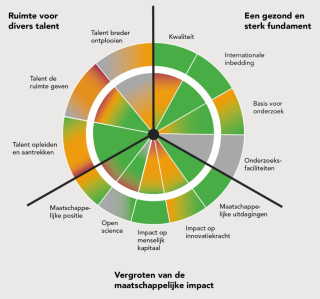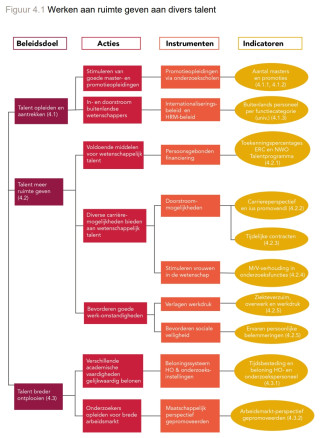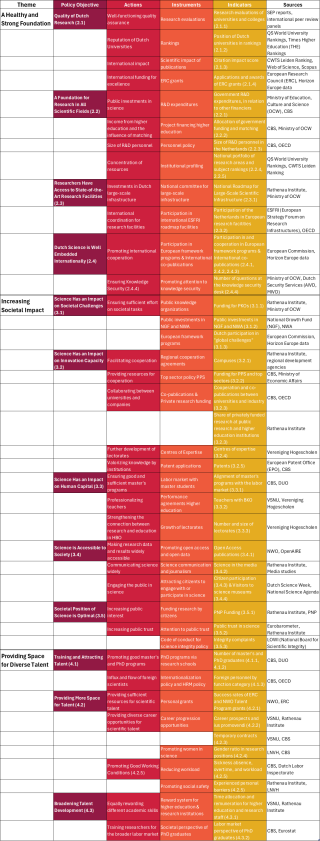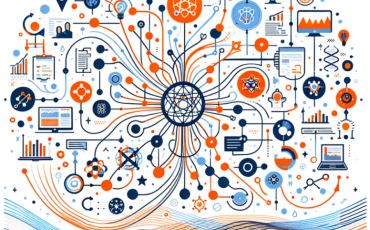
Three Themes of Scientific Progress
The report evaluates the state of Dutch science by focusing on three overarching themes:
- A Healthy and Strong Foundation
- This theme examines the overall quality of research in the Netherlands, its distribution across various scientific fields, and its international embedding. The indicators used here include the quality of research, as assessed by international committees, citation impact scores, and success in obtaining European research funding.
- Increasing Societal Impact
- This theme focuses on how science contributes to solving societal challenges. The indicators include funding dedicated to public knowledge organizations, the role of Dutch science in European framework programs, and the impact on innovation, as measured by collaborations between researchers and industry, patent applications, and the professional development of students.
- Providing Space for Diverse Talent
- The final theme centers on the development and retention of scientific talent. Indicators include the number of graduates and doctorates, international mobility of students and researchers, and the working conditions and career progression opportunities within the scientific community.
The Importance of Indicators
The report stresses the critical role of indicators in measuring the progress of science. These indicators not only provide a quantitative snapshot of the current state of affairs but also highlight trends and areas requiring further attention. However, the report also acknowledges the limitations of relying solely on quantitative data, suggesting that a blend of qualitative insights is necessary to fully understand the context behind the numbers.
The Balans van de Wetenschap 2024 presents an impressive list of indicators used to measure various policy areas. This not only highlights the depth of analysis required but also showcases the potential breadth of data points that the Open Research Information community could capture. These indicators extend well beyond the traditional metrics related to publications and datasets, encompassing a more holistic view of scientific impact and progress. As a community, we must expand our horizons and strive to provide this data openly or ensure that the sources of this information are accessible. By doing so, we can facilitate the creation of such comprehensive reports and support informed decision-making in science policy.
In particular, the report highlights the need for a broader interpretation of scientific quality, which includes societal relevance and the development of talent. This holistic approach ensures that science remains aligned with societal needs while fostering an environment where diverse talent can thrive.
The Role of Open Research Information
Open research information extends beyond the open access of publications and data to encompass the transparency and accessibility of information about research processes, methodologies, and the sources of data used in evaluations like the Balans van de Wetenschap 2024. This openness is crucial for ensuring that the indicators and the data driving scientific assessments are available for public scrutiny and independent evaluation.
The report underlines that the sources and indicators used to measure scientific progress should be as accessible as possible. This openness allows other researchers, policymakers, and the public to assess the validity and reliability of the findings. It also promotes a culture of transparency and accountability, where decisions and policies based on these indicators can be trusted and verified.
By ensuring that research information is openly available, we enhance the credibility of the scientific process and empower various stakeholders to engage more deeply with the data. This is particularly important in a time when the societal impact of science is under intense scrutiny, and the ability to validate claims and reproduce findings is essential to maintaining public trust in scientific endeavors.
Conclusion
The Balans van de Wetenschap 2024 provides a valuable overview of the state of science in the Netherlands, highlighting both achievements and areas for improvement. By focusing on these three key themes and the indicators that measure them, the report offers a roadmap for future scientific progress. As the scientific community continues to evolve, it is crucial that we maintain a balanced approach that integrates both quantitative and qualitative insights, ensuring that our research remains relevant, impactful, and inclusive.
The emphasis on open research information plays a crucial role in this process. By making the indicators and data sources used in reports like this one openly accessible, we can foster greater transparency, enhance the reliability of scientific assessments, and ultimately build a stronger connection between science and society. This openness is not just about sharing results but about sharing the very processes and methodologies that underpin scientific progress. The Open Research Information community must continue to advocate for and facilitate this openness, ensuring that all relevant data points are captured and made available to support comprehensive and transparent scientific evaluations.



Public Data Sources Used in the Balans van de Wetenschap 2024
-
Academic Ranking of World Universities (Shanghai ranking)
- Description: A global ranking of universities based on several indicators of academic or research performance.
- Website
-
CBS (Centraal Bureau voor de Statistiek)
- Description: The Dutch national statistics office providing extensive datasets on various aspects of Dutch society, including population, economy, and education.
- Website
-
CORDIS Database
- Description: The European Commission's primary public repository and portal to disseminate information on all EU-funded research projects and their results.
- CORDIS H2020 Projects
-
CWTS Leiden Ranking
- Description: A ranking of major universities worldwide based on the quality of academic publications in the Web of Science database. CWTS stands for Centre for Science and Technology Studies at Leiden University.
- Website
-
DUO, Databases Ingeschrevenen en Gediplomeerden
- Description: Dutch government databases that provide information on students enrolled and graduates from higher education institutions. DUO stands for Dienst Uitvoering Onderwijs, which is the Education Executive Agency of the Netherlands.
- DUO Open Onderwijsdata
-
European Patent Office, PATSTAT Database
- Description: A database providing access to worldwide patent data and statistics, useful for tracking innovation and patent trends.
- Website
-
Eurostat, Community Innovation Survey
- Description: A survey conducted by Eurostat that collects data on innovation activities of businesses across Europe, helping to benchmark and track innovation performance.
- Eurostat Data
-
Eurostat, Data over Wetenschap, Technologie en Innovatie
- Description: Eurostat’s datasets on science, technology, and innovation, including spending, personnel, and government budgets across EU countries.
- Eurostat Overview
-
H2020 Country Profiles
- Description: Profiles detailing the participation and performance of EU countries in Horizon 2020, the EU's research and innovation funding program.
- Horizon 2020 Country Profiles
-
H2020 Dashboard
- Description: An interactive tool providing insights and statistics on the Horizon 2020 program's funded projects, including data on proposals and funding distribution.
- Horizon Dashboard
-
NWO, Toekenningen Vernieuwingsimpuls
- Description: Data on grants awarded under the Innovational Research Incentives Scheme by the Dutch Research Council. NWO stands for Nederlandse Organisatie voor Wetenschappelijk Onderzoek (Dutch Research Council).
- NWO Vernieuwingsimpuls
-
OESO, Main Science and Technology Indicators (MSTI) Database
- Description: The OECD’s key database for international comparisons of science, technology, and innovation performance and policies. OESO is the Dutch abbreviation for the Organisation for Economic Co-operation and Development (OECD).
- OECD MSTI
-
OESO, Population and Employment Data
- Description: Comprehensive datasets on population and employment across OECD member countries, providing demographic and workforce insights.
- OECD Population Data
-
PER-Database (CHEPS en Rathenau Instituut)
- Description: A database created by CHEPS and the Rathenau Institute focusing on data related to higher education and research personnel. PER stands for Public Employment in Research.
- PER Database
-
QS Top Universities
- Description: An annual ranking of the world's top universities based on academic reputation, employer reputation, faculty/student ratio, and more.
- QS World University Rankings
-
Scientias
- Description: A popular Dutch website providing news and insights on science and technology, aimed at a broad audience.
- Scientias
-
SIA, Lectorenbestand
- Description: A registry of lecturers in Dutch higher education, focusing on applied research and practice-oriented education. SIA stands for Stichting Innovatie Alliantie (Innovation Alliance Foundation).
- SIA Lectorenbestand
-
Times Higher Education Ranking
- Description: An influential global ranking of universities based on their core missions including teaching, research, knowledge transfer, and international outlook.
- Times Higher Education Ranking
-
TWIN-Databases
- Description: A comprehensive database detailing total investments in science and innovation in the Netherlands, covering both public and private funding sources. TWIN stands for Totale Investeringen in Wetenschap en Innovatie (Total Investments in Science and Innovation).
- TWIN Database
-
UNL, WOPI
- Description: A set of tables providing detailed data on personnel at Dutch universities, available through the Association of Universities in the Netherlands. UNL stands for Universiteiten van Nederland (Universities of the Netherlands), and WOPI stands for Wetenschappelijk Onderwijs Personeelsinformatie (Scientific Education Personnel Information).
- UNL WOPI Tables
-
Web of Science / Clarivate Analytics
- Description: A comprehensive platform for bibliometric analysis, offering data on scientific publications and citations worldwide. Analyses conducted by CWTS Leiden, with additional processing by the Rathenau Institute.
- Web of Science




0 Praat mee